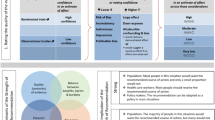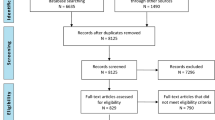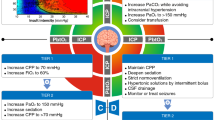Abstract
Purpose of review
Acute flaccid myelitis (AFM) is a recently described rare syndrome causing spinal cord injury in children. The purpose of this review is to describe the epidemiology of AFM, clinical presentation, and management. We further describe outcomes, rehabilitation strategies, and future directions for this group of children.
Recent findings
Outbreaks of Enterovirus D-68 (EV D-68) starting in 2014 coincided with increase in acute flaccid paralysis cases in children which were tracked by the Centers for Disease Control and Prevention (CDC). CDC provided guidelines for identification and management of cases of AFM. Long-term follow-up has not been sufficient but children with AFM have a wide range of presentation and residual disability following the illness. Further studies are needed to assess long-term outcomes and to help prevent AFM.
Summary
The epidemiology and acute management of AFM is well described in the literature but long-term follow-up and outcomes remain needed, especially regarding long-term disability from spinal cord injury. Additional studies are needed to provide further evidence of best practice and possible prevention.
Similar content being viewed by others
References
Dhillon JK, Shi J, Janezic A, Wheeler KK, Xiang H, Leonard JC. U.S. estimates of pediatric spinal cord injury: implications for clinical care and research planning. J Neuro-Oncol. 2017;34:1–8. doi:10.1089/neu.2016.4774.
Solomon T, Willison H. Infectious causes of acute flaccid paralysis. Curr Opin Infect Dis. 2003;16:375–81. doi:10.1097/01.qco.0000092807.64370.1e.
Centers for Disease Control and Prevention. Polio for Healthcare Professionals. 22 August 2016. Accessed April 10, 2017, from www.cdc.gov: https://www.cdc.gov/polio/us/hcp.html
Centers for Disease Control and Prevention. CDC Global Health – Polio: Why the CDC is involved. 6 January 2012. Accessed April 10, 2017, https://www.cdc.gov/polio/why/index.htm
Arita M. Poliovirus studies during the endgame of the polio eradication program. Jpn J Infect Dis. 2017;70:1–6. doi:10.7883/yoken.JJID.2016.356.
Van Haren K, Ayscue P, Waubant E, et al. Acute flaccid myelitis of unknown etiology in California, 2012-2015. JAMA. 2015;314(24):2663–71. doi:10.1001/jama.2015.17275.
Roux A, Lulu S, Waubant E, Glaser CA, Van Haren K, A polio-like syndrome in California: clinical, radiologic, and serologic evaluation of five children identified by a statewide laboratory over a twelve-month period. American Academy of Neurology Annual Meeting; April 29, 2014; Philadelphia, PA.
Holms-Hansen CC, Midgley SE, Fischer TK. Global Emergence of enterovirus D68: a systematic review. Lancet Infect Dis. 2016;16:e64–75. doi:10.1016/S1473-3099(15)00543-5.
Leshem E. Notes from the field: acute flaccid myelitis among persons aged <21 years-United States, August 1-November 13, 2014. 9 January 2015. https://www.cdc.gov/mmwr/preview/ mmwrhtml/ mm6353a3.htm.
Pustula DM, Aliabadi N, Haynes AK, Messacar K, Schreiner T, Maloney J, et al. Acute neurologic illness of unknown etiology in children-Colorado, August-September 2014. MMWR Morb Mortal Wkly Rep. 2014;63(40):901–2.
Centers for Disease Control and Prevention. AFM in the United States. Accessed April 1, 2017 from https://www.cdc.gov/acute-flaccid-myelitis/afm-surveillance.html.
Yea C, Bitnun A, Robinson J, Mineyko A, et al. Longitudinal outcomes in the 2014 acute flaccid paralysis cluster in Canada: a nationwide study. J Child Neurol. 2017;32(3):301–7. doi:10.1177/0883073816680770.
Poelman R, Schuffenecker I, Van Leer-Buter C, Josset L, Niesters HGM, Lina B, et al., on behalf of the ESCV-ECDC EV-D68 study group. European surveillance for enterovirus 68 during the emerging North American outbreak in 2014. J Clin Vir. 71(2015):1–9. doi:10.1016/j.jcv.2015.07.296.
Knoester M, Scholvinck E, Poelman R, Smit S, Vermont CL, Niesters HGM, et al. Upsurge in Enterovirus D68, the Netherlands, 2016. Emerg Infect Dis. 2017;23(1):140–3. doi:10.3201/eid2301.161313.
Dyrdak R, Grabbe M, Hammas B, Ekwall J, Hansson KE, Luthander J, et al. Outbreak of enterovirus D68 of the new B3 lineage in Stockholm, Sweden, August to September 2016. Euro Surveill. 2016 Nov 17;21(46):3043. doi:10.2807/15607917. ES.20016.21.46.30403.
Centers for Disease Control and Prevention. Notes from the Field. Acute flaccid myelitis among persons aged ≤21 years—United States, August 1–November 13. Morb Mortal Wkly Rep. 2014;63(53):1243–4.
Miller, Lisa. (2015). Standardized case definition for acute flaccid myelitis. Council of State and Territorial Epidemiologists 15-ID-01. Retrieved April 14, 2017 from http://c.ymcdn.com/sites/www.cste.org/resource/resmgr/2015PS/2015PSFinal/15-ID-01.pdf
Cho SM, MacDonald S, Frontera JA. Coxsackie B3/B4-related acute flaccid myelitis. Neurocrit Care 2017, published online March 21, 2017. DOI: 10.1007/s120828-017-0377-8
Saas M, Youssef S, Kirschke D, Shubair M, Haddadin D, Myers J, et al. Acute flaccid paralysis: the spectrum of a newly recognized complication of West Nile Virus Infection. J Inf Secur. 2005;51:120–7. doi:10.1016/j.jinf.2004.10.005.
Marciniak C, Sorosky S, Hynes C. Acute flaccid paralysis associated with West Nile Virus: motor and functional improvement in 4 patients. Arch Phys Med Rehab 2004: 85, 1933-1938. DOI: 10.1016/j.apmr.2004.04.038.
Huang CC, Liu CC, Chang YC, Chen CY, Wang ST, Yeh TF. Neurological complications in children with enterovirus 71 infection. NEJM. 1999;23:936–42. doi:10.1056/NEJM199909233411302.
Garg M, Kulkarni SD, Patil V, Sayed R, Hegde AU. Uncommon disorders masquarading as acute flaccid paralysis in children. Indian J Pediatr, Published online 21 December 2016. DOI: 10.1007/s12098-016-2276-y
Yeung SCM, Antonio G, Ip KS. Flaccid paralysis of the limbs after an asthma attack. Pediatr Neurol. 2010;42:133–6. doi:10.1016/j.pediatrneurol.2009.09.013.
Laxmivandana R, Yergolkar P, Rajeshwar M, Chitamba SD. Genomic characterization of coxsackievirus type A24 strains associated with acute flaccid paralysis and rarely identified Hopkins syndrome. Arch Virol. 2014;159:3125–9. doi:10.1007/s00705-014-2129-9.
Greninger AL, et al. A novel outbreak enterovirus D68 strain associated with acute flaccid myelitis cases in the USA (2012-14): a retrospective cohort study. The Lancet Infectious Disease. 2015;15:671–82. doi:10.1016/S1473-3099(15)70093-9.
Nelson GR, et al. Recognition and management of acute flaccid myelitis in children. Pediatr Neurol. 2016;55:17–21. doi:10.1016/j.pediatrneurol.2015.10.007.
Messacar K, Schreiner T, Maloney J, Wallace A, Ludke J, Oberste M, et al. A cluster of acute flaccid paralysis and cranial nerve dysfunction temporally associated with an outbreak of enterovirus D68 in children in Colorado, USA. http://www.thelancet.com April 2015: 385:1662–1671. DOI: 10.1016/S0140-6736(14)62457-0.
Centers for Disease Control and Prevention. Acute flaccid myelitis: interim considerations for clinical management. 7 November 2014. Retrieved on 15 April 2017 from https://www.cdc.gov/acute-flaccid-myelitis/downloads/interim-considerations-afm.pdf
Maloney JA. MRI findings in children with acute flaccid paralysis and cranial nerve dysfunction occurring during the 2014 Enterovirus D68 outbreak. Am J Neuroradiol. 2015(36):245–50. doi:10.3174/ajnr.A4188.
Kornafel, T. Physical and occupational therapy for a teenager with acute flaccid myelitis: a case report. Physical & Occupational Therapy in Pediatrics (online) 17 January 2017. DOI: 10.1080/01942638.2016.1255289
Ludke J, Messacar K, Yang M, Maloney J, Carry T, Kenyon P, et al. Neurologic follow up of 12 Colorado children with acute flaccid myelitis at one year. Published online before print April 8, 2015, Neurology April 5, 2015 vol. 16 Supplement S10.004.
Sadowsky C, McDonald J. Activity based restorative therapies (ABRT); concepts and applications in spinal cord injury-related neurorehabilitation. Developmental Disabilities Research Reviews. 2009;15:112–6. doi:10.1002/ddrr.61.
Dolbow DR, Gorgey AS, Recio AC, Stiens SA, Curry AC, Sadowsky CL, et al. Activity-based restorative therapies after spinal cord injury: Inter-institutional conceptions and perceptions. Aging Dis. 2015;6(4):254–61. doi:10.14336/AD20141105. eCollection 2015 Aug. Review
Chae J, Triolo RJ, Kilgore K, Creasey GH: Functional neuromuscular stimulation. In: DeLisa JA, Gans BM, editors. Rehabilitation Medicine: Principles and Practice, Third Edition. Lippincott Williams & Wilkins; 1998.
Glickman LB, Geigle PR, Paleg GS. A systematic review of supported standing programs. J Pediatr Rehabil Med. 2010;3(3):197–213. doi:10.3233/PRM-2010-0129.
Carlucci F, Orlando G, Haxhi J, Laudani L, Giombini A, Macaluso A, et al. Older age is associated with lower optimal vibration frequency in lower limb muscles during whole-body vibration. Am J Phys Med Rehabil. 2015;94(7):522–9. doi:10.1097/PHM.0000000000000193.
Becker B. Aquatic therapy: scientific foundations and clinical rehabilitation applications. PMR. 2009;1(9):859–72. doi:10.1016/j.pmrj.2009.05.017.
McCarthy JJ, Chafetz RS, Betz RR, Gaughan J. Incidence and degree of hip subluxation/dislocation in children with spinal cord injury. J Spinal Cord Med. 2004;27(Suppl 1):S80–3.
Dearolf WW III, Betz RR, Vogel LC, Levin J, Clancy M, Steel HH. Scoliosis in pediatric spinal cord-injured patients. J Pediatr Orthop. 1990;10(2):214–8.
Chafetz RS, Mulcahey MJ, Betz RR, Anderson C, Vogel LC, Gaughan JP, et al. Impact of prophylactic thoracolumbosacral orthosis bracing on functional activities and activities of daily living in the pediatric spinal cord injury population. J Spinal Cord Med. 2007;30(Suppl 1):S178–83.
Lauer R, Johnston TE, Smith BT, Mulcahey MJ, Betz RR, Maurer AH. Bone mineral density of the hip and knee in children with spinal cord injury. J Spinal Cord Med. 2007;30(Suppl 1):S10–4.
Maimoun I, Fattal C, Micallef JP, Rabischong P. Bone loss in spinal cord-injured patients: from physiopathology to therapy. Spinal Cord. 2006;44:203–10. doi:10.1038/sj.sc.3101832.
Rinker B. Nerve transfers in the upper extremity: a practical user’s guide. Ann Plast Surg. 2015;74(Suppl 4):S222–8. doi:10.1097/SAP.0000000000000373. Review
Dunn JA, Hay-Smith EJ, Keeling S, Sinnott KA. Decision-making about upper limb tendon transfer surgery by people with tetraplegia for more than 10 years. Arch Phys Med Rehabil. 2016;97(6 Suppl):S88–96. doi:10.1016/j.apmr.2015.09.026.
Onders RP, Ponsky TA, Elmo M, Lidsky K, Barksdale E. First reported experience with intramuscular diaphragm pacing in replacing positive pressure mechanical ventilators in children. J Pediatr Surg. 2011;46(1):72–6. doi:10.1016/j.jpedsurg.2010.09.071.
Stiens SA, Bergman SB, Goetz LL. Neurogenic bowel dysfunction after spinal cord injury: clinical evaluation and rehabilitative management. Arch Phys Med Rehabil. 1997;78(3 Suppl):S86–102. Review
Hixon AM, Yu G, Smith Lesser J, Yagi S, Clarke O, Chiu CY, et al. A mouse model of paralytic myelitis caused by enterovirus D68. PLoS Pathog. 2017;13(2):e1006199. doi:10.1371/journal.ppat.10061699.
Author information
Authors and Affiliations
Corresponding author
Ethics declarations
Conflict of interest
The authors declare that they have no competing interests.
Human and animal rights and informed consent
This article does not contain any studies with human or animal subjects performed by any of the authors.
Additional information
This article is part of the Topical Collection on Spinal Cord Injury Rehabilitation
Rights and permissions
About this article
Cite this article
Rybczynski, S., Dean, J. & Melicosta, M. Pediatric Spinal Cord Injury Due to Acute Flaccid Myelitis: Epidemiology, Clinical Management, and Implications for Rehabilitation. Curr Phys Med Rehabil Rep 5, 113–120 (2017). https://doi.org/10.1007/s40141-017-0159-4
Published:
Issue Date:
DOI: https://doi.org/10.1007/s40141-017-0159-4




